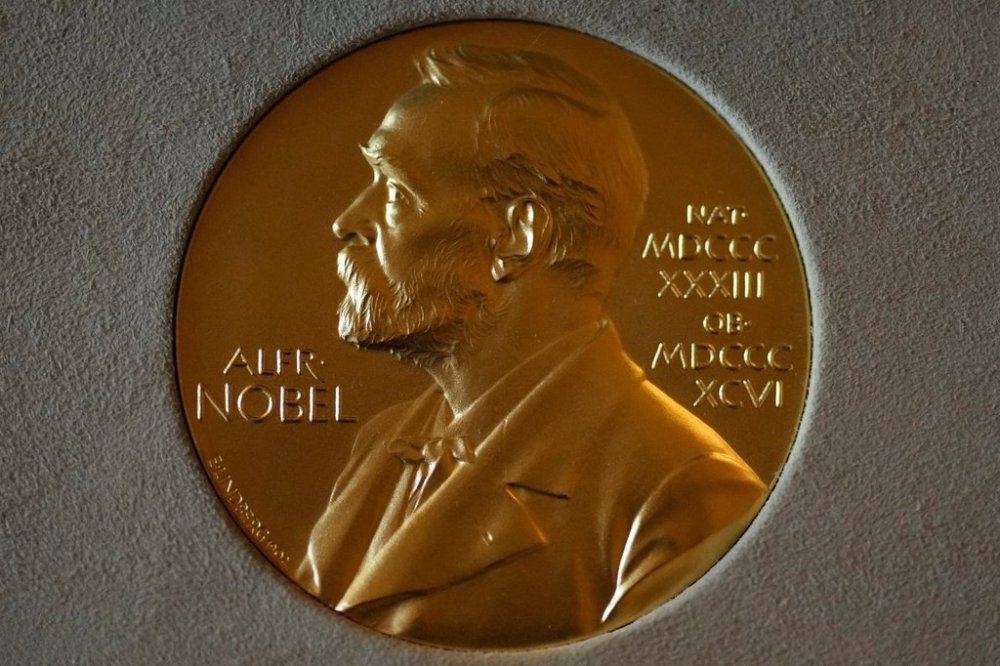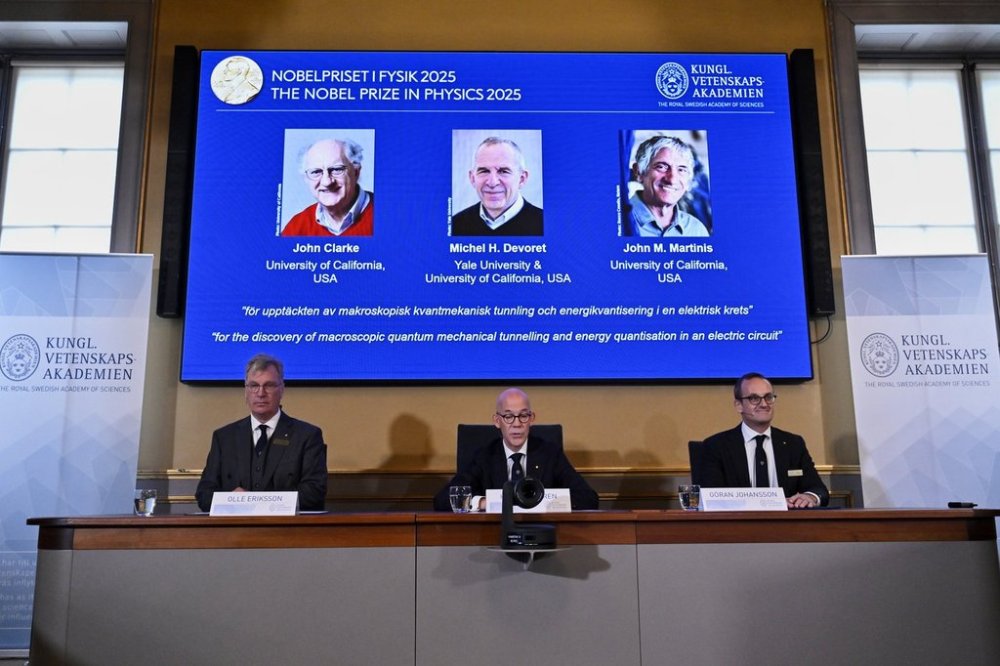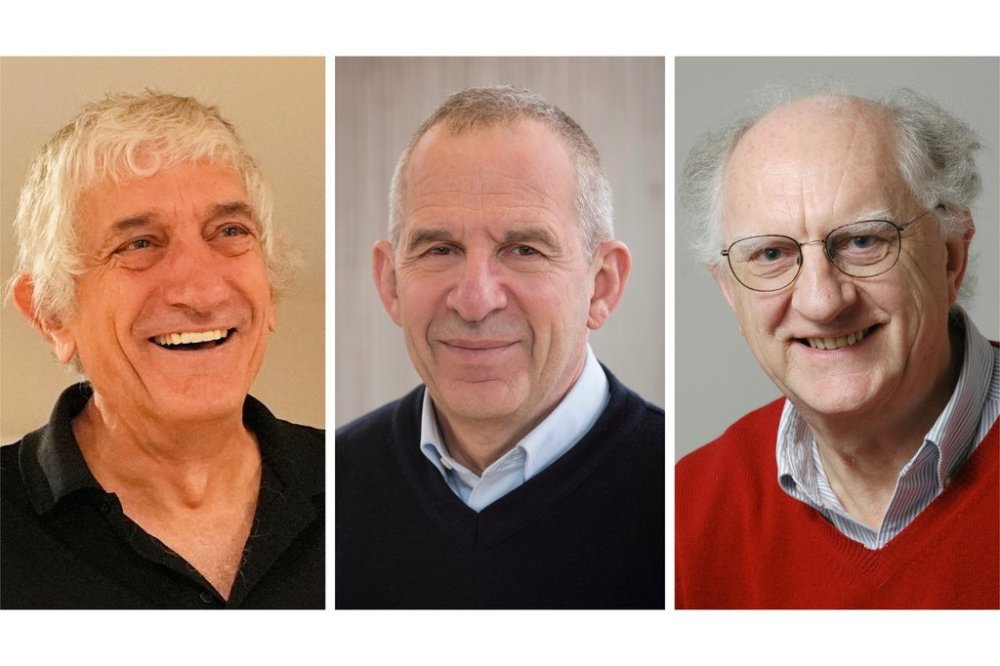Three scientists at US universities win Nobel Prize in physics for advancing quantum technology
Advertisement
Read this article for free:
or
Already have an account? Log in here »
We need your support!
Local journalism needs your support!
As we navigate through unprecedented times, our journalists are working harder than ever to bring you the latest local updates to keep you safe and informed.
Now, more than ever, we need your support.
Starting at $15.99 plus taxes every four weeks you can access your Brandon Sun online and full access to all content as it appears on our website.
Subscribe Nowor call circulation directly at (204) 727-0527.
Your pledge helps to ensure we provide the news that matters most to your community!
To continue reading, please subscribe:
Add Brandon Sun access to your Free Press subscription for only an additional
$1 for the first 4 weeks*
*Your next subscription payment will increase by $1.00 and you will be charged $20.00 plus GST for four weeks. After four weeks, your payment will increase to $24.00 plus GST every four weeks.
Read unlimited articles for free today:
or
Already have an account? Log in here »
STOCKHOLM (AP) — Three scientists won the Nobel Prize in physics Tuesday for research on the strange behavior of subatomic particles called quantum tunneling that enabled the ultra-sensitive measurements achieved by MRI machines and laid the groundwork for better cellphones and faster computers.
The work by John Clarke, Michel H. Devoret and John M. Martinis, who work at American universities, took the seeming contradictions of the subatomic world — where light can be both a wave and a particle and parts of atoms can tunnel through seemingly impenetrable barriers — and applied them in the more traditional physics of digital devices. The results of their findings are just starting to appear in advanced technology and could pave the way for the development of supercharged computing.
The prizewinning research in the mid-1980s took the subatomic “weirdness of quantum mechanics” and found how those tiny interactions can have real-world applications, said Jonathan Bagger, CEO of the American Physical Society. The experiments were a crucial building block in the fast-developing world of quantum mechanics.

Speaking from his cellphone, Clarke, who spearheaded the research team, said: “One of the underlying reasons that cellphones work is because of all this work.”
When quantum mechanics first came to light in 1926, a prominent physicist sought to illustrate its many paradoxes with the example of a cat in a box that was both alive and dead at the same time. The three Nobel winners showed that science can put such principles to work, said Physics Today Editor-in-Chief Richard Fitzgerald, who was in a competing research group in the 1990s.
“They didn’t take it that far, but they showed that it can be done,” Fitzgerald said.
The winning physicists took “the scale of something that we can’t see, we can’t touch, we can’t feel” and brought it “up to the scale of something recognizable” and made it “something you can build upon,” Fitzgerald said.
Clarke, 83, conducted his research at the University of California, Berkeley. Martinis, 67, worked at the University of California, Santa Barbara. Devoret, 72, is at Yale and also at the University of California, Santa Barbara.
How the winners reacted
Martinis’ wife, Jean, told Associated Press reporters who called at his home hours after the announcement that he was still asleep and did not yet know. In the past, she said, they stayed up on the night of the physics award, but at some point they decided that sleep was more important.
When his wife woke him and told him about the journalists seeking an interview, the new Nobel laureate remembered that the prizes were being announced this week. He opened his computer, looked at the announcement and saw his picture along with the other winners.
“So I was kind of in shock,” he said.
Clarke said it never occurred to him that he would win a Nobel Prize.
“I practically collapsed,” Clarke told AP. “I was completely stunned. I mean, it’s something that I had never, ever dreamed of in my entire life.”
Why the work matters

Martinis — who was a senior Google scientist working toward quantum computing before co-founding his own company, Qolab — said the big future goal is quantum computing, which would be a giant leap in speed and sophistication by relying on the power of the contradictory states in that subatomic world.
That is still eight to 10 years away. But he said the team’s experiments showed “a computer could be much, much more powerful.”
Devoret is now chief scientist for Google’s quantum computing efforts.
Quantum computers are “one very sort of obvious use,” but the research could also help develop sensors that detect and measure faint phenomena, such as magnetic fields, and advance cryptography to encode information, said Mark Pearce, a professor of astrophysics and Nobel physics committee member.
And through better understanding of precision chemistry, it could develop better materials for daily living and even give an added boost to artificial intelligence, Martinis said.
Before the work at Berkeley, scientists knew single electrons or pairs of tiny electrons could tunnel through an impenetrable barrier. What Clarke said his team learned was “if you design the circuity properly, you could actually have tunneling” of objects larger and more useful than just a couple of electrons.
That discovery “can be used to make very sophisticated things that would not otherwise be able to work out,” Clarke said at a news conference, mentioning his iPhone and quantum computers.
He also criticized the Trump administration for its deep cuts to science funding, saying they would “cripple science.”
“If this continues … it may take a decade to get back to where we were half a year ago,” Clarke said.
Martinis, Bagger and Fitzgerald said it’s a bit of a stretch to say cellphones now use the breakthrough made by Clarke and colleagues. But ultra-sensitive measuring devices rely on the team’s work, including MRI machines, which would be far less useful without their advances, Bagger said.
“Quantum mechanics is everywhere in everything we do, from the cellphone to the satellite communications that are connected to the cellphones, to the screens on which we watch our videos on our cellphones,” Bagger said.

Nobel history and other 2025 prizes
Tuesday’s award was the 119th time the prize has been given. Last year, artificial intelligence pioneers John Hopfield and Geoffrey Hinton won the physics prize for helping create the building blocks of machine learning.
On Monday, Mary E. Brunkow, Fred Ramsdell and Dr. Shimon Sakaguchi won the Nobel Prize in medicine on Monday for discoveries about how the immune system knows to attack germs and not our bodies.
Nobel announcements continue with the chemistry prize on Wednesday and literature on Thursday. The Nobel Peace Prize will be announced Friday followed by the Nobel Memorial Prize in economics on Monday.
The award ceremony will be held Dec. 10, the anniversary of the 1896 death of Alfred Nobel, the wealthy Swedish industrialist and the inventor of dynamite who founded the prizes.
The prizes carry priceless prestige and a cash award of 11 million Swedish kronor (nearly $1.2 million).
___
Corder reported from The Hague, Netherlands, and Borenstein from Washington. Associated Press journalist Adithi Ramakrishnan in New York contributed to this report.
